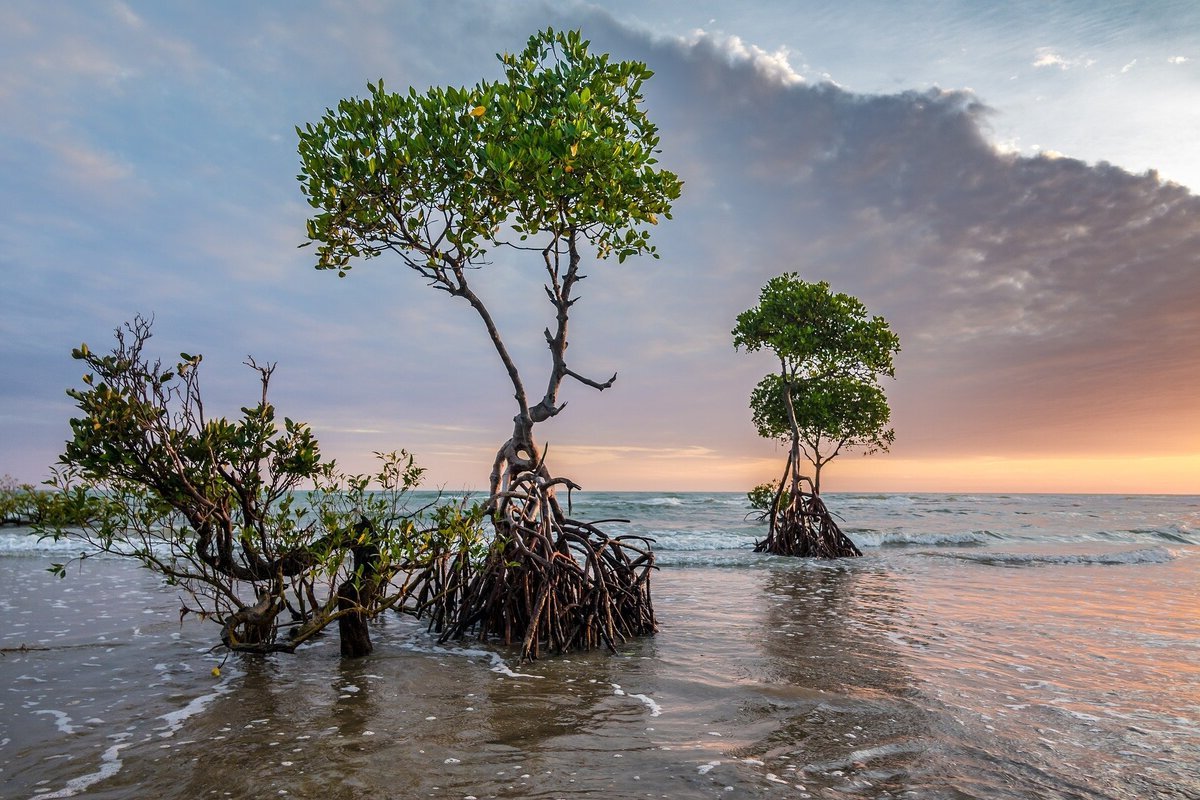
Mangroves are some of the most fascinating ecosystems on Earth. Found in tropical and subtropical regions, these unique trees and shrubs thrive in salty, coastal waters. But what makes them so special? Mangroves not only provide critical habitats for a variety of wildlife, but they also play a vital role in protecting shorelines from erosion and storm surges. Their intricate root systems filter pollutants, improving water quality. Plus, they act as significant carbon sinks, helping combat climate change. Ready to dive into some amazing mangrove facts? Let's explore the wonders of these incredible coastal guardians!
What Are Mangroves?
Mangroves are unique coastal ecosystems found in tropical and subtropical regions. They are known for their dense, tangled roots that grow above the water. These trees and shrubs play a crucial role in maintaining the health of coastal environments.
- Mangroves are found in over 118 countries and territories worldwide.
- They thrive in harsh conditions, including salty water, low oxygen levels, and unstable soil.
- Mangrove roots can filter out salt, allowing them to survive in saline environments.
- These ecosystems are home to a wide variety of wildlife, including fish, birds, and crustaceans.
Importance of Mangroves
Mangroves are not just fascinating; they are vital for the environment and human communities. They provide numerous benefits that are often overlooked.
- Mangroves act as natural barriers, protecting coastlines from erosion and storm surges.
- They help in carbon sequestration, storing up to four times more carbon than tropical rainforests.
- Mangroves improve water quality by filtering pollutants and trapping sediments.
- They support fisheries by providing breeding grounds and nurseries for many marine species.
Mangroves and Biodiversity
The biodiversity within mangrove ecosystems is astounding. These habitats support a wide range of species, many of which are not found anywhere else.
- Mangroves are home to over 70 different species of trees and shrubs.
- They provide habitat for endangered species like the Bengal tiger and the proboscis monkey.
- Mangrove forests are crucial for the survival of many bird species, including migratory birds.
- The roots of mangroves offer shelter to juvenile fish, crabs, and shrimp, making them essential for marine biodiversity.
Threats to Mangroves
Despite their importance, mangroves face numerous threats that put their survival at risk. Human activities and natural factors contribute to their decline.
- Mangroves are being destroyed at an alarming rate, with over 35% lost in the last 20 years.
- Coastal development and urbanization are major threats to mangrove ecosystems.
- Climate change and rising sea levels pose significant risks to mangrove survival.
- Pollution, including oil spills and plastic waste, severely impacts mangrove health.
Conservation Efforts
Efforts to conserve and restore mangroves are crucial for maintaining their ecological and economic benefits. Various initiatives are underway to protect these vital ecosystems.
- Many countries have established protected areas to conserve mangrove forests.
- Community-based conservation projects involve local communities in mangrove restoration.
- International organizations like the Ramsar Convention work to protect wetlands, including mangroves.
- Reforestation projects aim to restore degraded mangrove areas by planting new trees.
Interesting Mangrove Facts
Mangroves have some fascinating characteristics that make them unique among plant species. Here are some intriguing facts about these remarkable ecosystems.
- Some mangrove species can grow up to 80 feet tall.
- Mangroves can live for over 100 years, with some species reaching up to 300 years.
- The seeds of mangroves, known as propagules, can float and travel long distances before taking root.
- Mangrove leaves can excrete excess salt through special glands, helping them survive in saline conditions.
Economic Value of Mangroves
Mangroves provide significant economic benefits to human communities. Their value extends beyond environmental protection to include various economic activities.
- Mangroves support commercial and subsistence fisheries, providing livelihoods for millions of people.
- They contribute to tourism, attracting visitors interested in bird watching, fishing, and eco-tours.
- Mangroves provide raw materials like timber, fuelwood, and medicinal plants.
- They help in coastal protection, reducing the costs associated with storm damage and erosion.
Future of Mangroves
The future of mangroves depends on our actions today. Sustainable management and conservation efforts are essential to ensure these ecosystems continue to thrive.
- Innovative technologies, such as drone mapping and satellite monitoring, are being used to track and manage mangrove health.
Mangroves: Nature's Coastal Guardians
Mangroves are more than just trees. They protect coastlines, support diverse wildlife, and help combat climate change. These unique ecosystems act as natural barriers against storms, reducing erosion and safeguarding coastal communities. Mangroves also provide habitats for countless species, from fish to birds, making them biodiversity hotspots. Their roots trap sediments, improving water quality and fostering marine life. Additionally, mangroves sequester large amounts of carbon, playing a crucial role in mitigating global warming.
Understanding and preserving mangroves is vital for maintaining ecological balance and protecting our planet. By supporting conservation efforts, we can ensure these incredible ecosystems continue to thrive. Next time you see a mangrove forest, remember its importance and the many benefits it provides. Let's work together to protect these natural wonders for future generations.
Was this page helpful?
Our commitment to delivering trustworthy and engaging content is at the heart of what we do. Each fact on our site is contributed by real users like you, bringing a wealth of diverse insights and information. To ensure the highest standards of accuracy and reliability, our dedicated editors meticulously review each submission. This process guarantees that the facts we share are not only fascinating but also credible. Trust in our commitment to quality and authenticity as you explore and learn with us.


